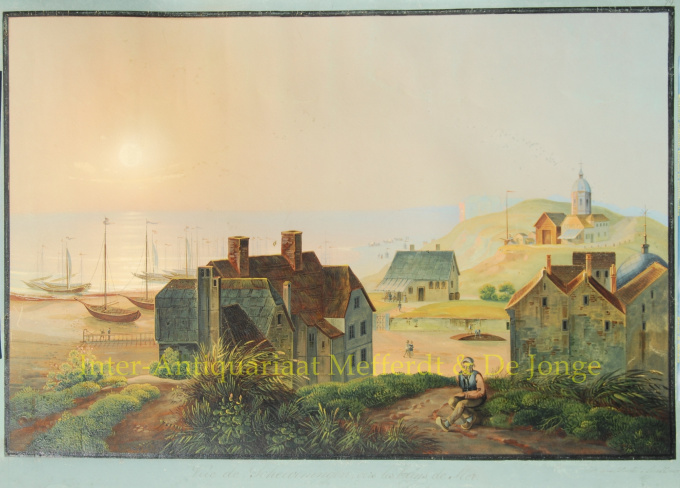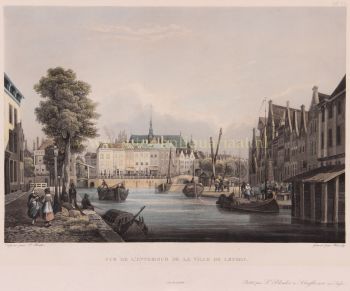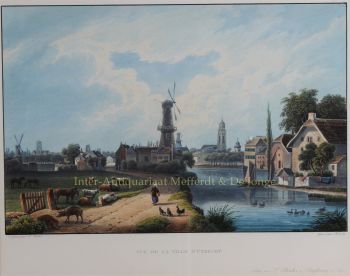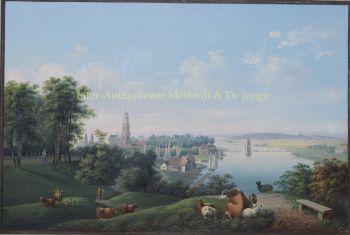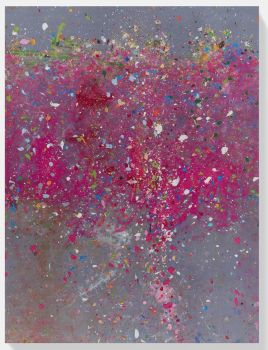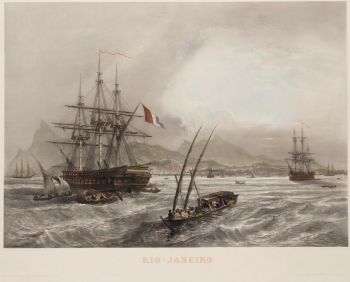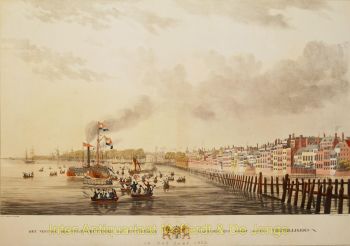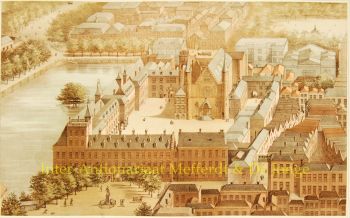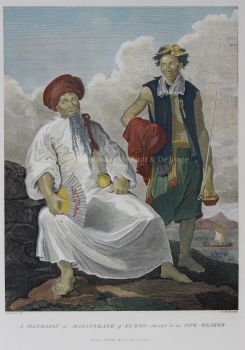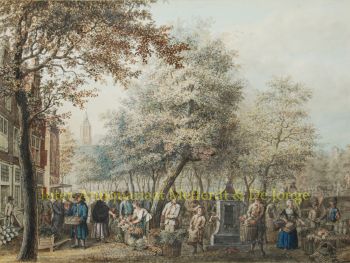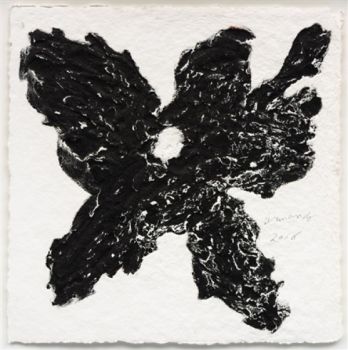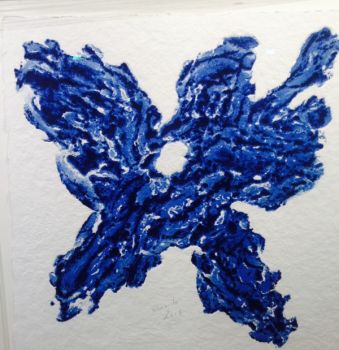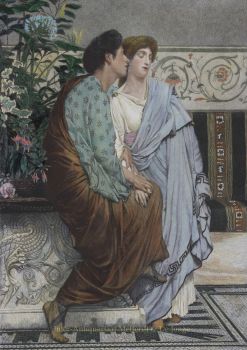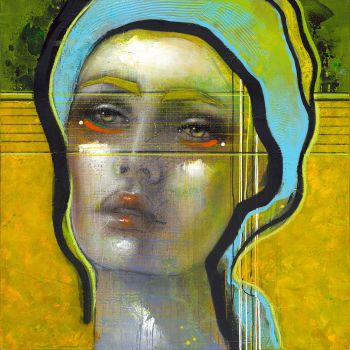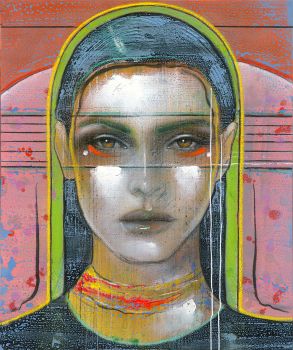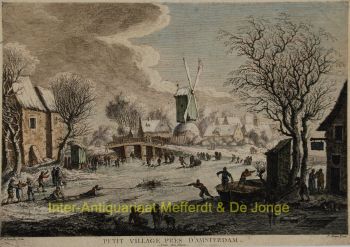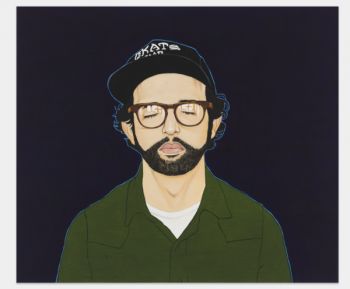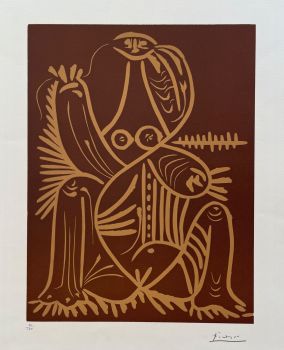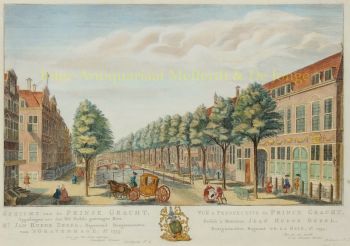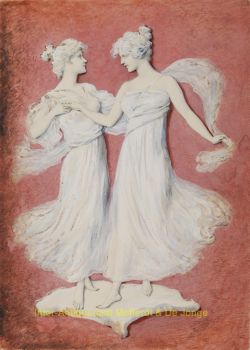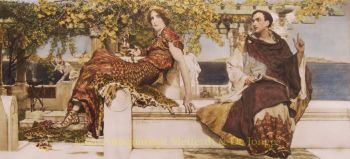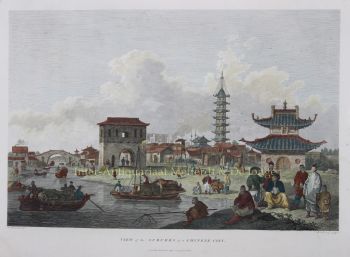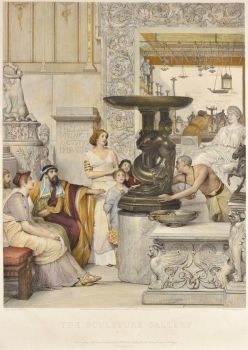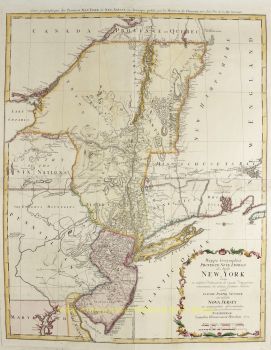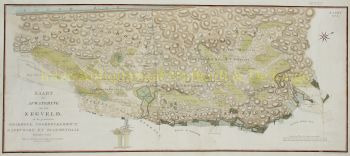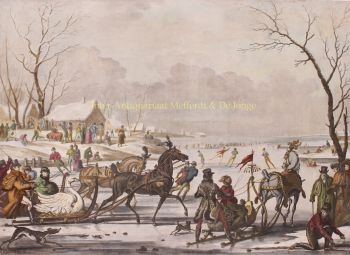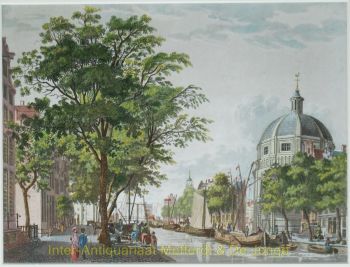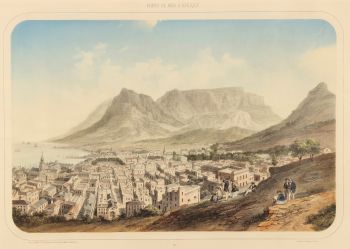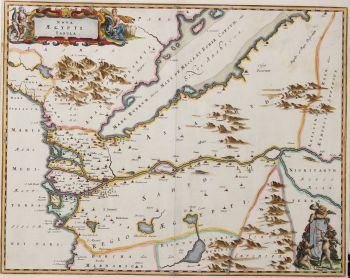Zeebad Scheveningen 1825
Louis Bleuler
€ 2.750
Inter-Antiquariaat Mefferdt & De Jonge
- About the artworkZEEBAD SCHEVENINGEN BIJ ONDERGAANDE ZON "Vue de Scheweningen, vers les bains de Mer." Gouache op gekleurd papier vervaardigd door Louis Bleuler ca. 1825. Gesigneerd "chez Louis Bleuler a Schafhouse" met pen en inkt onder de voorstelling. Genummerd "79"boven de voorstelling rechts. Afm. (voorstelling) 32,5 x 48,5 cm. We zien de kop van de Keizerstraat met links het Heerenlogement en onderaan het duin het zomerhuis Nieuw Soetenburgh. Op het duin staat de Theekoepel van dominee Faassen De Heer, die van 1798 tot 1835 predikant was te Scheveningen. Waarschijnlijk moet het bruin gekleurde gebouwtje met de paal ervoor de Seinpost voorstellen. Paviljoen Von Wied, gebouwd in 1827, staat nog niet op de voorstelling. Op de achtergrond zien we twee strandtenten en, in de vloedlijn, drie badkoetsen. Vermoedelijk heeft de kunstenaar Scheveningen nooit bezocht, de byzantijnse koepel geheel rechts is fantasie. Bleuler (1792 -1850) wordt gerekend tot de beste Zwitserse landschapschilders van zijn tijd. Hij studeerde in Parijs, maar betrok later kasteel Laufen (CH) naast de Rheinfall, Europa's grootste waterval. De Rijn vormde een grote bron van inspiratie, hetgeen resulteerde in een schitterende serie van 80 gravures met gezichten op steden en landschappen "Der Rhein von den Quellen bis zur Mündung". Met deze gouache, een ontwerp voor plaat nr. 79, bevinden we ons in het gebied van de monding van de Rijn. Dit boekwerk verscheen in 1826 en was in eerste instantie bedoeld als souvenir voor de Grand Tourist, (veelal Engelse) elite die zich een toeristische reis langs de Rijn konden veroorloven, maar de keizer van Oostenrijk en Marie Isabelle van Sicilië behoorden tot Bleuler's eerste en belangrijkste afnemers. Prijs: Euro 2.750,- (incl. lijst)
- About the artist
Johann Ludwig Bleuler, sometimes called Louis (12 February 1792 – 28 March 1850) was a Swiss painter, landscape artist and publisher.
He was born in Feuerthalen. His father, Johann Heinrich, was a landscape painter and member of the Schweizer Kleinmeister [sv] (lesser masters). His older brother, Johann Heinrich, the Younger (1787–1857) also became a painter. He began his artistic training in his father's workshop, where he learned painting and draftsmanship.
From 1817 to 1818, he travelled throughout the Rhine region, making landscape sketches and studies. The following year, he participated in an exhibition at the Künstlergesellschaft (an artists' association) in Zürich. That same year, he made a combination study and business trip to Brussels and Amsterdam. During a subsequent stay in Paris, he met his future wife, Antoinette Trillié. Back in Feuerthalen, he and his older brother took over management of their father's business.
In 1824, he started his own publishing company in Schaffhausen. Beginning in 1827, he worked on a sequence of prints featuring landscapes and vedute along the Rhein; a project that would occupy him until his death. His major work, Voyage pittoresque aux bords du Rhin et de la Suisse was published in 1845. The aquatints were all colored by hand, using gouache techniques that gave them the appearance of Old Masters.
In 1833, he had moved his home and fast growing business to Schloss Laufen near the Rheinfall. Many well known, or soon to be well known, artists were employed by his shop, including Egidius Federle, Konrad Corradi and Emanuel Labhardt.
In 1838, he made a business trip to St. Petersburg. While there, he contracted a serious illness that left him in poor health. In the following years, his company was nearly ruined, through a combination of new printing techniques and the Revolutions of 1848. He died on 28 March 1850 in Laufen-Uhwiesen.
Are you interested in buying this artwork?
Artwork details
Related artworks
- 1 - 4 / 24
- 1 - 4 / 12

